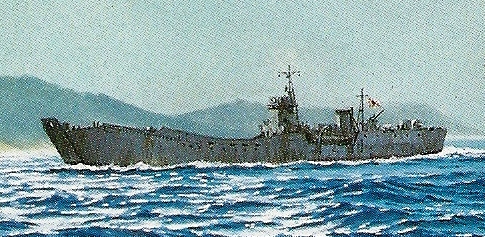Landing Ship Tank T.103
(posted 1 June 2014)
Landing Ship
Tank T.104
(posted 1 June 2014)
Landing Ship
Tank T.105
(posted 1 July 2014)
Landing Ship
Tank T.106
(posted 1 August 2014)
Landing Ship
Tank T.107
(posted 1 September 2014)
Landing Ship
Tank T.108
(posted 1 October 2014)
|
Landing Ship Tank T.110
(posted 1 November
2014)
Landing Ship Tank T.111
(posted 1 December
2014)
Landing Ship Tank T.112
(posted 1 June 2015)
Landing Ship
Tank T.113
(posted 1 August 2016)
Landing Ship
Tank T.114
(posted 1 August 2016)
Landing Ship
Tank T.115
(posted 1 Sepember 2016)
|
Landing Ship Tank T.129
(posted 1 Sepember
2016)
Landing Ship Tank T.130
(posted 1 December
2016)
Landing Ship Tank T.131
(posted 1 December
2016)
Landing Ship Tank T.132
(posted 1 December
2016)
Landing Ship Tank T.133
(posted 1 January
2017)
Landing Ship Tank T.134
(posted 1 February
2017)
Landing Ship Tank T.135
(revised 1 November
2017)
Landing Ship Tank T.136
(revised 1 May 2017)
Landing Ship
Tank T.137
(posted 1 May 2017)
Landing Ship
Tank T.138
(posted 1 June 2017)
Landing Ship
Tank T.139
(posted 1 July 2017)
Landing Ship
Tank T.140
(posted 1 August 2017)
|
Landing Ship Tank T.141
(posted 1 Sepember
2017)
Landing Ship Tank T.142
(posted 1 October
2017)
Landing Ship Tank T.143
(posted 1 November
2017)
Landing Ship Tank T.144
(revised 1 March 2018)
Landing Ship
Tank T.145
(posted 1 January 2018)
Landing Ship
Tank T.146
(posted 1 February 2018)
|
Landing Ship Tank T.147
(posted 1 March
2018)
Landing Ship Tank T.151
(posted 1 April 2018)
Landing Ship
Tank T.152
(posted 1 May 2018)
Landing Ship
Tank T.153
(revised 1 September 2018)
Landing Ship
Tank T.154
(posted 1 June 2018)
Landing Ship
Tank T.157
(posted 1 July 2018)
|
Landing Ship Tank T.158
(posted 1 July 2018)
Landing Ship
Tank T.159
(revised 27 July 2018)
Landing Ship
Tank T.160
(posted 27 July 2018)
Landing Ship
Tank T.161
(posted 1 July 2018)
Landing Ship
Tank T.164
(posted 1 July 2018)
Landing Ship
Tank T.165
(posted 1 July 2018) |
Landing Ship Tank T.172
(posted 27 July 2018)
Landing Ship
Tank T.173
(posted 27 July 2018)
Landing Ship
Tank T.174
(posted 27 July 2018)
Landing Ship
Tank T.175
(posted 27 July 2018)
Landing Ship
Tank T.176
(posted 27 July 2018) |



